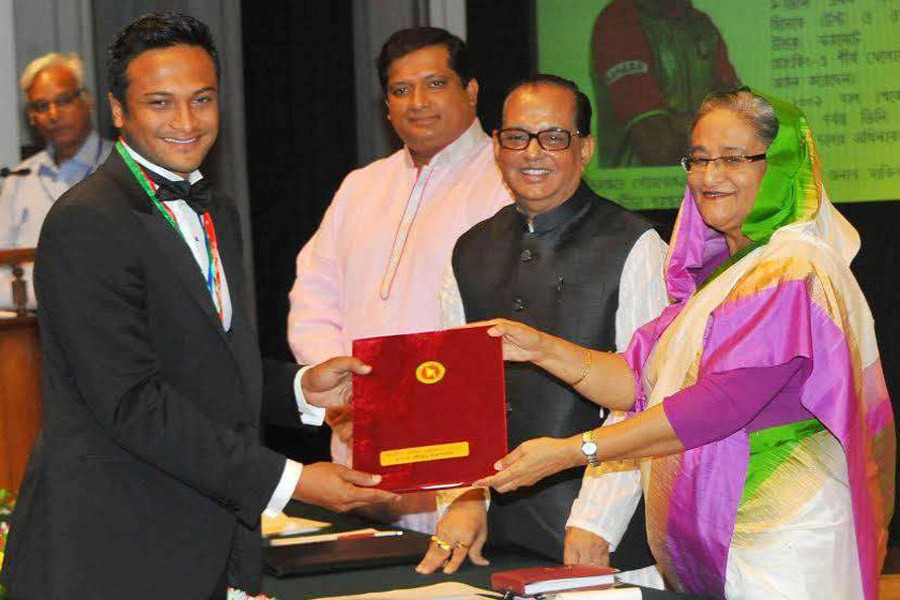Sport has a unique and universal appeal to attract and inspire people. That makes it a highly effective tool for engaging individuals, communities and even countries for taking actions to improve the health of their populations, especially children and youths. It can also be a powerful means for mobilisation in the global fight against diseases. Scientific evidences demonstrate that regular participation in sport benefits people of all ages and conditions in terms of physical, social and mental wellbeing. Physical activities and sport support the strategies to improve diet, discourage the use of addictive substances like tobacco, alcohol and drugs, and promotes healthy attitude cum behaviour. Besides, they help enhance functional capacity, reduce healthcare costs, improve workplace productivity, and promote social interaction-cum-integration. Sport generates health benefits by two basic means - through direct participation, and by the use of participatory and spectator games as a platform for communication, education and mobilisation. Well-designed sport for health initiatives directed towards children and youths can work at both levels, thereby aiding in positive social change and transformation, peace and development across the globe.
Sport has been used as a means of bringing about social change and cultural transformation since time immemorial. Since the advent of modern Olympics in 1896, sportsmen of different disciplines have shown that sport enables people to come together in a spirit of promoting peace and sharing a desire for self-growth. Back in 2003, the United Nations acknowledged the importance of sport in development when it adopted the Resolution 58/5. It recognised 'Sport as a means to promote education, health, development and peace'. The UN believes that sport can have a significant impact on social policy and community integration, and widely played games not requiring expensive equipment are particularly suited for this role.
According to the report 'Harnessing the Power of Sport for Development and Peace: Recommendations to Governments' by the International Working Group on Sport for Development and Peace (UN initiative, 2008), "Sport for Development and Peace refers to the intentional use of sport, physical activity and play to attain specific development and peace objectives".
Sport for Development and Peace has now emerged as an international movement that encompasses a broad cross-section of stakeholders. Through the combined efforts of all these actors, it is poised to become a significant new development domain that demonstrates growing momentum across the globe. However, to fully harness its potential, appropriate government policies and investments are required to support and scale up relevant programmes on a nationwide basis.
In Bangladesh, there has been a rapid upsurge in urbanisation of major metropolitan centres in recent years. This is especially true in case of the six major cities, viz. Dhaka, Chattogram, Rajshahi, Khulna, Barishal and Sylhet. But the unplanned growth of these urban centres has given rise to excessive congestion in residential areas and rapid depletion of open spaces, fields, parks and playgrounds. This in turn has led to loss of space and opportunity for children and youths to engage in outdoor and indoor sport. The proliferation of cable television, computer games, internet, smart-phones etc. is also making school-children and youths averse to games and sport. This trend is quite alarming as it has direct bearing on the health condition of young Bangladeshis and their future growth as healthy citizens.
Under these circumstances, a social movement is required in the major cities and towns of Bangladesh to arouse interest of the younger generation in games and sport. Popularising simple, easy-to-learn games with minimum space requirement and cost involvement for mass participation like Table Tennis, Badminton, Volleyball and Kabaddi can be effective in attracting children and youths to the realm of physical sport, thereby encouraging them to lead a healthy life. Besides, practice of traditional sporting pastimes like Yoga, Pranayama, Swimming, indigenous games, as well as participation in institutionalised movements like Scouting can also supplement this process of making children and youths go outdoors and live in harmony with nature for their holistic growth and healthy living.
In the above backdrop, it is quite sad that allocation for sports has shrunk in the proposed 2019-2020 National Budget, and no National Sports Award for honouring accomplished individuals and institutions has been given in the country since the year 2012. The last time the prize was awarded was in 2016, when the winners of 2010, 2011 and 2012 were honoured. Consequently, the awards for as many as six years (2013, 2014, 2015, 2016, 2017 and 2018) have now become overdue. There was a buzz in the media that awards for at least four years were in the pipeline during 2018. But sadly another year is passing by, and there is no sign yet of honouring our sportspersons and organisers for their sporting feats. Ignoring them in this way cannot augur well for our sporting arena.
The National Sports Awards are given by the Ministry of Youth and Sports to our leading sportspersons and organisers for their contributions to the country's games and sport since the year 1976. Up to 2000 CE, only a few illustrious sportspersons and organisers (around 20 in total) were awarded this prestigious national prize. But since 2001, the number of recipients jumped dramatically to over 10 on an average per year. That may have been justified as the number of disciplines as well as rate of success is also rising. But keeping the award in cold storage for long six years cannot be defensible in any way. The concerned authorities should wake up, look into the matter, and opt for an expeditious solution to promote future growth of sport in the country.
Dr. Helal Uddin Ahmed is a retired Additional Secretary and former Editor of Bangladesh Quarterly.


